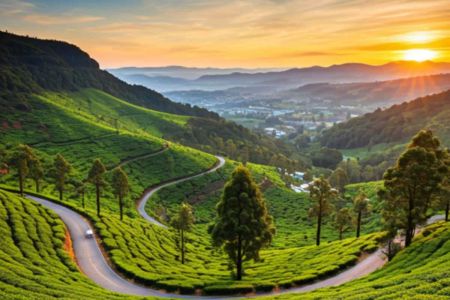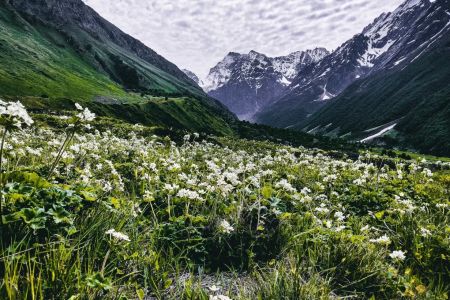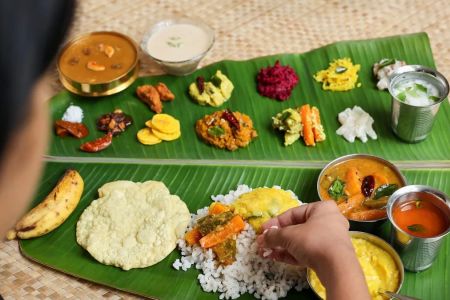Guide to Exploring the Indian Himalayas: A Journey Through India’s Majestic Mountain Range
1. Why Visit the Indian Himalayas?
The Indian Himalayas are one of the world’s most stunning natural wonders, offering not only breathtaking views but also an opportunity to immerse oneself in a rich cultural heritage. Stretching across northern India, this majestic mountain range encompasses a wide variety of landscapes, from snow-capped peaks to lush valleys and high-altitude lakes. The Himalayas are home to some of the most iconic destinations in India, attracting adventure seekers, nature lovers, and spiritual travelers alike.
Whether you're looking to trek the high passes, meditate in serene monasteries, or simply enjoy the beauty of the Himalayas, this region offers something for every type of traveler. The tranquility and sense of adventure you find in the Indian Himalayas are unparalleled, making it an essential destination for anyone seeking both physical challenges and spiritual renewal.
2. Best Time to Visit the Indian Himalayas
When planning your trip to the Indian Himalayas, timing is everything. The best time to visit depends on the kind of experience you seek. For trekking and outdoor adventures, the ideal time to visit is during the spring (March to May) and autumn (September to November) months. These periods offer clear skies, mild temperatures, and favorable weather conditions for trekking and exploration.
If you prefer snow-covered landscapes and winter sports, winter (December to February) is the perfect season. However, it's important to note that extreme cold can make high-altitude treks difficult and require careful preparation. Monsoon season (June to August) should generally be avoided due to the risk of landslides and heavy rainfall, which can disrupt travel plans.
3. Top Destinations in the Indian Himalayas
The Indian Himalayas are home to numerous awe-inspiring destinations. Here are a few of the most popular and unique places to visit:
- Leh-Ladakh: Known for its striking landscapes and Buddhist culture, Leh-Ladakh offers stunning monasteries, high-altitude deserts, and breathtaking views of the mountain ranges. It is a must-visit for trekkers and adventure enthusiasts.
- Manali: A charming hill station, Manali is surrounded by the Beas River and offers a mix of adventure sports, cultural experiences, and natural beauty. From trekking and paragliding to visiting ancient temples, Manali is a versatile destination.
- Shimla: Famous for its colonial architecture, pine forests, and pleasant climate, Shimla is a great destination for those looking to relax and enjoy scenic views without the intense trekking demands.
- Rishikesh: Known as the "Yoga Capital of the World," Rishikesh offers spiritual experiences such as yoga retreats, meditation, and visits to sacred temples. It’s also famous for adventure activities like white-water rafting along the Ganges.
4. Trekking in the Indian Himalayas
One of the main attractions of the Indian Himalayas is trekking, and there are countless trekking trails that cater to different levels of experience. Whether you're a beginner or an experienced mountaineer, the Himalayas offer routes that promise spectacular views and memorable adventures.
For beginners, the Chopta-Tungnath Trek is a fantastic option. This moderate trek leads to one of the highest Shiva temples in the world and offers stunning views of the snow-capped peaks. For experienced trekkers, the Markha Valley Trek in Ladakh provides a more challenging experience with the reward of unparalleled mountain views and the chance to visit remote villages.
The Everest Base Camp Trek is also one of the most famous treks that starts from the Indian Himalayas, though it requires good physical preparation. Trekking in the Himalayas is not just about the journey, but also about the people you meet along the way, from fellow travelers to the welcoming local communities who call the mountains home.
5. Experience the Culture of the Himalayas
Beyond the stunning landscapes and thrilling treks, the Indian Himalayas offer rich cultural experiences that reflect the region's diverse heritage. Many areas of the Himalayas are home to small communities with unique customs, languages, and traditions. From visiting remote monasteries in Ladakh to experiencing the rural lifestyle in Himachal Pradesh, the region offers a wealth of cultural exploration.
In places like Spiti Valley, travelers can experience the traditional lifestyle of the people, who practice Tibetan Buddhism. Visiting local monasteries, such as the Kye Monastery, provides insight into the spiritual practices that have shaped the region. You can also participate in local festivals, such as the Ladakh Festival, which showcases traditional dance, music, and food.
6. Plan Your Ideal Trip to the Indian Himalayas
Planning your trip to the Indian Himalayas requires some preparation, as the terrain and altitude can pose challenges for travelers. It’s important to choose your destination based on your fitness level, interests, and the season. Whether you're trekking, relaxing, or immersing yourself in the local culture, planning ahead will ensure you get the most out of your trip.
For first-time visitors, it's a good idea to book a guided tour or hire a local guide who knows the terrain and can provide you with valuable insights into the region’s culture and natural beauty. Websites like Travel India One offer comprehensive travel packages that cater to all your needs, from transportation and accommodations to trekking and cultural tours.
Ready to embark on an unforgettable adventure in the Indian Himalayas? Start planning your journey today and discover the magic of one of the world’s most beautiful mountain ranges.











